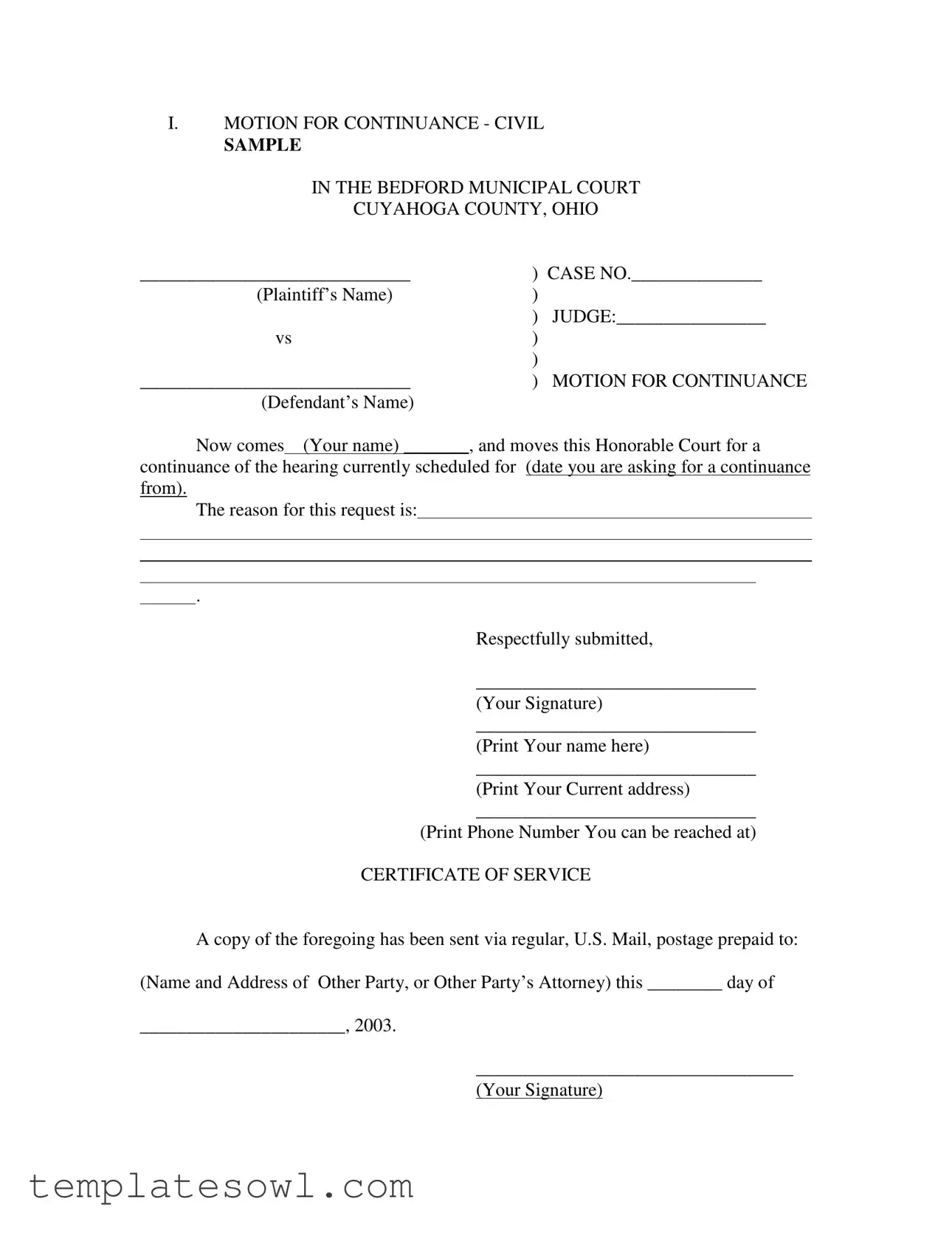What is a Motion for Continuance?
A Motion for Continuance is a formal request to postpone a scheduled court hearing or trial. You or your lawyer file this document to explain why you need more time. Valid reasons might include needing additional time to gather evidence, unavailability of a key witness, or any personal emergencies that prevent attendance.
Who can file a Motion for Continuance?
Either party in a legal case can file this motion, which includes both the plaintiff and the defendant. If you believe you cannot adequately prepare for your hearing on the scheduled date, you can seek a continuance.
How do I fill out the Motion for Continuance form?
Begin by entering your name, the case number, and the judge's name at the top of the form. Then, you'll need to specify the date of the original hearing and clearly state the reason for requesting a continuance. Make sure to sign the form and provide your printed name, address, and phone number at the end. It's important to be clear and concise about the reason for your request.
What happens after I file the Motion for Continuance?
Once you file the motion with the court, the judge will review it. Sometimes, the judge may schedule a hearing to discuss your request. After considering your reasons, the judge will decide whether to grant or deny the continuance. You will be notified of the decision.
Is there a deadline for filing a Motion for Continuance?
Yes, deadlines can vary by jurisdiction, so it’s crucial to file your motion as soon as you know you need a continuance. Some courts require motions to be filed a specific number of days before the scheduled hearing. Checking your local rules will help ensure that you comply with their timelines.
Do I need to serve the Motion for Continuance to the other party?
Yes, you must provide a copy of the Motion for Continuance to the other party involved in the case. This is typically done by mailing it to their address, which you will indicate in the "Certificate of Service" section on the form. This ensures that both parties are aware of the request and can respond if necessary.
Can my request for a continuance be denied?
Yes, the judge has the discretion to deny your request for a continuance. If the judge believes that your reasons are not sufficient or that delaying the trial would not be in the interest of justice, they may deny your motion. It's crucial to provide compelling reasons to increase the chances of approval.
What should I do if my Motion for Continuance is denied?
If your motion is denied, you are still obligated to appear at the scheduled hearing. It is essential to prepare as thoroughly as possible, even on short notice. If you believe the denial was unfair or not justified, you may explore other legal options, such as appealing the decision or discussing it with a lawyer.

